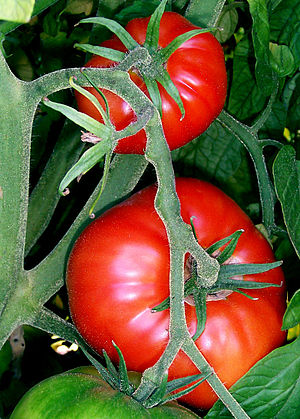Tomatoes may be the most complex vegetable in our refrigerator. For starters, they aren’t really a vegetable at all, at least botanically. But as members of the nightshade family, they are considered vegetables for cooking purposes and in the eyes of the law. Next, there is the love/hate relationship many people have for them. Some people love them; some people hate them, but even those who hate them often like them in other things like tomato sauce, ketchup, and salsa.
Here in Arizona, December is the best time to start your tomato seedlings indoors in order to ensure they are ready for planting in February. To get you in the mood for planting or simply to inspire you to pick some up with your next grocery purchase, here are some fun facts, health benefits, and recipes that will tempt even the most ardent anti-tomato palette. And in case you aren’t up for growing your own, we included some local sources where you can purchase them.
Little Known Facts
Originating in South America, tomatoes were introduced to the rest of the world by the Spanish explorers returning from the New World. They get their name from the Aztec word “xitomatl” which means “plump thing with a navel” and are perennial plants when grown in their native habitat.
Once you learn that botanically, tomatoes are fruits, it is easier to understand why the French originally called them the “apple of love” and why their scientific name lycopersicon lycopersicum means “wolf peach.”
Although tomatoes are the most common plant grown in U.S. gardens, China is actually the largest producer and provides more than a quarter of the tomatoes grown in the world.
Although there are more than 7,000 varieties of tomato, the most common categories are beefsteak, plum, cherry, and grape.
Health Benefits
Tomatoes are high in antioxidants, specifically lycopene, which aid in protecting against cell damage, cancer, and cardiovascular disease. A 3.5 oz red tomato only contains about 18 calories but it also provides dietary fiber, protein, vitamins A, C, and E, and potassium.
At different points in history, tomatoes where thought to be poisonous but this was likely a result of people ingesting the vines, leaves, and stems of the plant which contain atropine and tomatine, both of which are harmful to humans and dogs.
Creative Recipes
Armenian Cucumber — Tomato Salad from Kelly Saxer of Desert Roots Farm
Corn and Black Bean Salsa from Mark and LeeAnn Freeman of Freeman’s Corn Patch
Greek Shrimp with Feta Cheese from Black Mesa Ranch in Snowflake, AZ
Mexican Summer Squash from Arlene Flake, Northern Arizona Rancher.
Spanish Rice with Bacon from Nancy Brierley, former California and Arizona farmer.
Looking for local Arizona farmers that provide fresh local tomatoes? Go to Fill Your Plate’s homepage, click on “Find a Farm Product,” and select “tomatoes” from the list to get a list of local farms that offer tomatoes. To find a farmer’s market near you that is open for the winter, check out this recent post on Winter Farmer’s Markets.
Related Articles:
- AZ Local Ingredients Come Together to Create a Delicious Healthy Hamburger (fillyourplate.org)
- How to Grow Tomatoes in Arizona (fillyourplate.org)
- Tomato Gravy Recipe (fillyourplate.org)



Pingback: Celebrate National Pig Day!Fill Your Plate Blog
Pingback: Play Ball!! Pack a Picnic for Spring TrainingFill Your Plate Blog